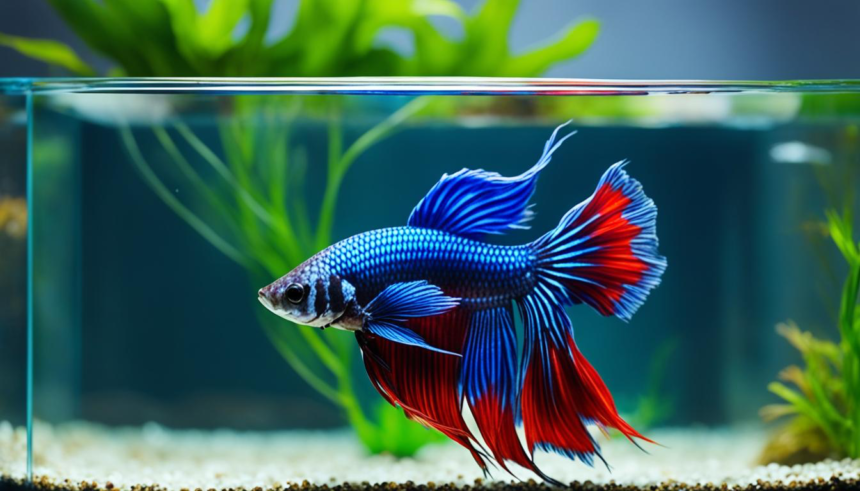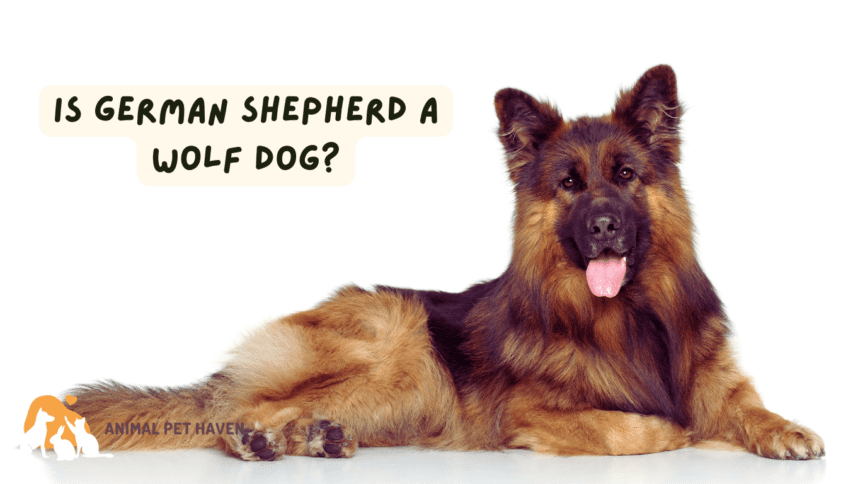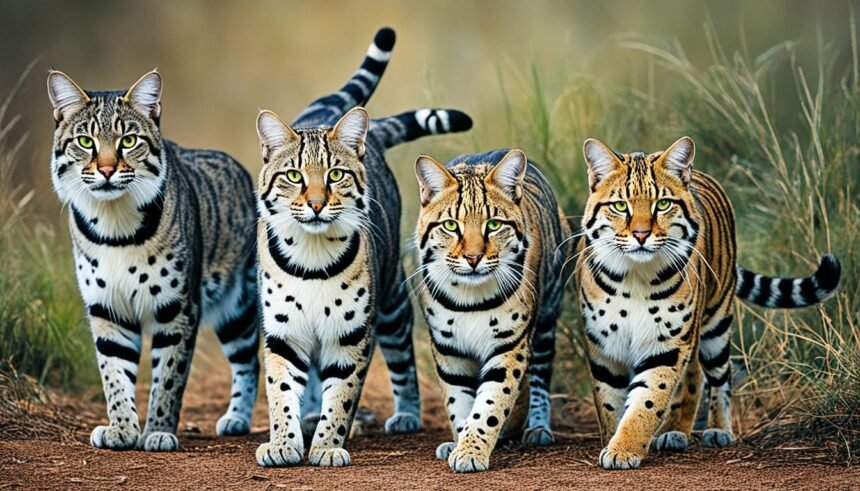You know, Which is the most affectionate cat color? Many people looking for a cat wonder if the cat’s color or breed affects how loving they are. Some studies say that cat colors might influence their character. Others believe a cat’s upbringing, breed, and unique personality matter more in how loving they are.
Studies from the University of California, Berkeley, for instance, showed that orange and bi-colored cats seem friendlier. On the other hand, black, white, or tri-colored cats appear to be more reserved. But, these are just general observations, and each cat is unique.
It’s important to note that a cat’s color doesn’t determine if it’s affectionate or not. Cats of various colors can be very loving. And some breeds are known for being especially caring, regardless of their fur color. So, the connection between cat color and affection isn’t clear-cut.
Understanding Cat Colors and Patterns
Cats have many colors and patterns, making each one unique and charming. You might see a tuxedo cat in black and white or a bright orange tabby. By learning about cat colors and patterns, you can love and see the special features in every cat.
Common Cat Coat Colors
Common colors for cat coats are:
- Black: Solid black, no other marks.
- White: Pure white with blue, green, or odd eyes.
- Orange: From light to deep red-orange, known as ginger or red.
- Gray: Varies from light silver to dark charcoal.
- Brown: Rich, warm brown, sometimes mixed with other colors.
Unique Color Combinations and Patterns
Cats also come in special patterns and mixes, like:
- Tabby: Shows as stripes, dots, or swirls in brown, gray, or orange.
- Calico: A mix of black, white, and orange in a tri-color pattern.
- Tortoiseshell: Mottled with black, orange, and sometimes cream or white.
- Tuxedo: Resembles a black and white tuxedo suit.
- Black Smoke: A black coat with a white undercoat, appearing smoky when moving.
| Coat Color | Percentage of Cats |
|---|---|
| Tabby | 60-70% |
| Black | 15-20% |
| White | 5-10% |
| Orange | 5-10% |
| Other Colors and Patterns | 5-10% |
A litter of kittens can have many colors, from black to calico, showing their diversity. Some people believe that color patterns can hint at a cat’s personality, but this isn’t proven by science. It’s more about what people notice in their own cats.
The Link Between Cat Color and Personality
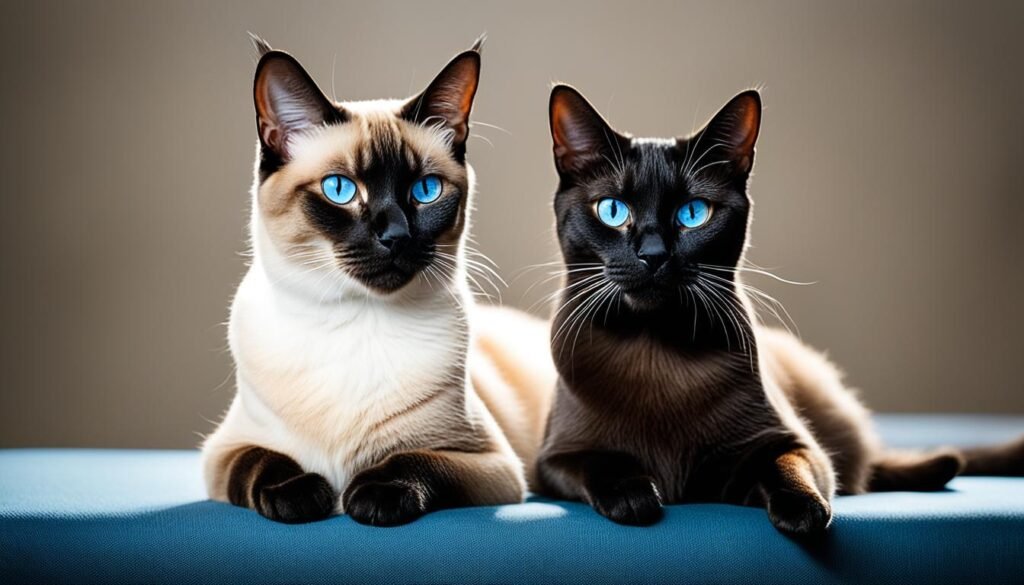
It might seem that a cat’s coat color reflects their personality, but it’s not that simple. Researchers are still studying if a cat’s color links to its traits. Yet, it seems that a cat’s coat color could affect its personality to some degree.
Genetic Factors Influencing Temperament
Certain genes might help shape a cat’s personality, including those for coat color. For instance, the orange coat gene is usually found in male cats. Many people say that these male cats are more loving, making orange tabby cats appear especially friendly.
| Cat Color | Perceived Personality Traits |
|---|---|
| Orange | Trainable, friendly, calm, affectionate, troublemakers |
| Gray | Shy, aloof, intolerant |
| Tabby | Bold, active, aggressive, higher prey drive |
| Tricolor | Stubborn, intolerant |
| Bicolor | Tolerant, friendly |
| Black | Antisocial, less likely to be adopted |
| White | Aloof, shy, lazy, calm |
Environmental Factors Affecting Personality
Cat’s personalities can also be influenced by their environment. How they are treated as kittens and then cared for matters a lot. Cats raised with love and varied experiences are more likely to become friendly, no matter their color.
Living with different people and places can also change a cat over time. A cat’s personality is a mix of what it’s born with and its experiences. So, it’s best to think of each cat as an individual, not just a color.
Tabby Cats: Laid-back and Sociable
Tabby cats are the most usual type of pet cat. They’re loved worldwide for their friendly nature and special coat patterns. Known for being easygoing and friendly, they make great pets for homes that want a peace-loving friend.
Tabby cats are not a breed, but have a unique coat. They come in four main pattern types. These can be in various colors, like gray, orange, and black, often mixed shades.
Tabbies love to be close to their owners. They’re famous for snuggling and sitting on laps, making them great lap cats. They talk a lot too, using purrs and chirps to show their love and needs.
| Characteristic | Description |
|---|---|
| Weight | 8 – 16 pounds |
| Height | 9 – 16 inches |
| Lifespan | 12 – 20 years |
| Temperament | Smart, outgoing, shy, adventurous, independent, sociable, active, laid-back, and vocal |
Tabby cats are also smart and can learn tricks. They show curiosity and independence, exploring their world. Many owners find them to be sensitive and comforting during tough times.
With good care, tabby cats can live a long time, like 15-20 years. They fit well in different homes, from apartments to the countryside. Health check-ups, a good diet, and regular grooming are key to their happiness and health.
Black Cats: Friendly Hunters with a Stubborn Streak
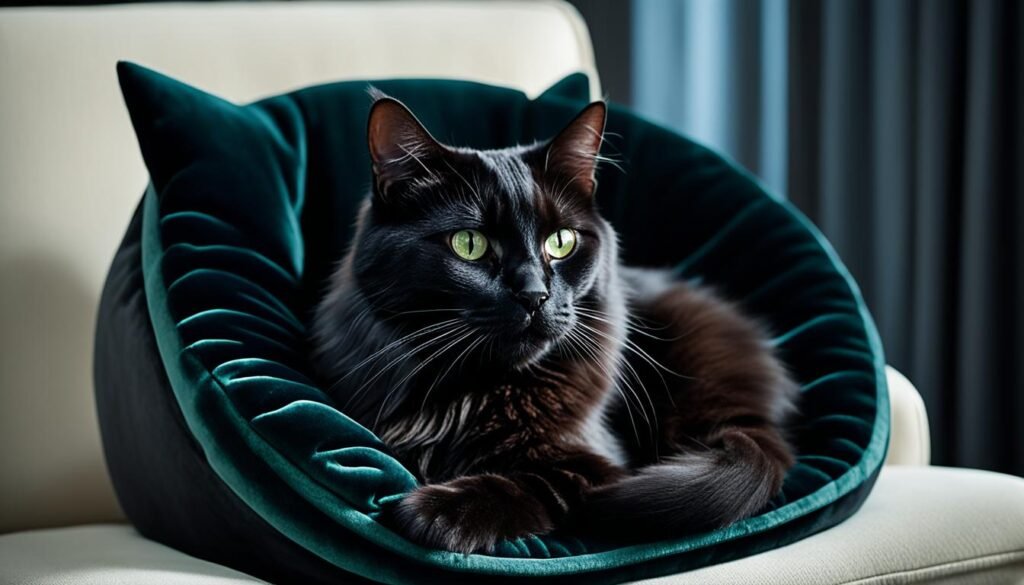
Black cats are not just elegant and mysterious— they’re also affectionate and loyal friends. They have a bit of a stubborn streak which makes them even more unique. These sleek felines excel in hunting, moving with grace and quickness.
Despite being great pets, black cats face wrong beliefs and superstitions. This leads to them being picked for adoption less often than other cats. A study in 2002 proved that black cats were least likely to find homes from shelters. They were also more likely to be put down. This shows there’s a big need to teach people more about these amazing creatures.
Misconceptions About Black Cats
In many cultures, seeing a black cat meant bad luck or witchcraft. These old beliefs hurt black cats’ chances of being adopted. But, it’s important to know these ideas are not true. Black cats are just as loving as any other cat.
Some common myths about black cats are:
- Black cats bring bad luck
- Black cats are linked to witchcraft and evil
- Black cats are more aggressive than other cats
- Black cats are less friendly or affectionate
We should work to disprove these myths. Teaching people the truth about black cats is key. They are friendly animals. With this knowledge, they can find the loving homes they deserve.
Adoption Rates for Black Cats
Even though black cats are loving and friendly, they often go unnoticed in shelters. Here are some facts about black cats and their chances of adoption:
- Black cats are the most likely to be left in shelters and the least likely to be adopted
- The Cat Fanciers’ Association features 22 breeds of black cat, each with their own unique qualities
- Bombay cats, known as “miniature black panthers,” are entirely black
- British Shorthairs, one of the oldest black cat breeds, have strong bodies, soft coats, and love to cuddle
- Persian cats, a favorite black cat breed, are gentle and loving, but need their beautiful coats attended to regularly
Shelters and rescues can help by showcasing the special traits of different black cat breeds. This way, those looking to adopt might consider personality over color. They could then find the ideal feline friend for their home and life.
Ginger, Orange, and Red Cats: Affectionate with a Temper
Ginger, orange, and red cats stand out because of their special colors and loving personalities. They’re friendly and love to be close to their humans. Yet, sometimes they can show they’re not happy, which makes them even more interesting.
A study at the University of California, Berkeley, found that people see orange cats as friendly. This fits with the idea that ginger cats are some of the sweetest. They love to cuddle and need to be near their owners.
Gender Differences in Orange Cats
It’s interesting how being male or female affects orange cats. Because the gene for their color is linked to their gender, about 80% are male. This is because females need two X chromosomes to be orange, which is less common.
| Gender | Percentage of Orange Cats | Personality Traits |
|---|---|---|
| Male | 80% | More dominant, aggressive, and territorial |
| Female | 20% | More laid-back, calm, and affectionate |
Studies show that male orange cats are usually larger than other cats. They might do better in the countryside, where they’re often found. But this also means that they don’t live as long in places with more dangers.
In rural areas, male orange cats can be more aggressive. Meanwhile, female ones are usually calmer and more loving. The way they act clearly shows how their gender affects their behavior.
It’s good to remember that not all ginger cats act the same. Another thing that matters is their breed and where they live. But, the idea that they are very friendly, love to cuddle, and can sometimes be moody is what many people know them for.
Black and White Cats: Loyal Lap Cats

Black and white cats get called tuxedo cats. This is because their fur looks like a tuxedo. They have a very calm and gentle nature. These cats are very loyal to their family. They usually choose one person to be very close to. They love to sit on their human’s lap. They are always ready for a cuddle.
A study of 1,274 cat owners found tuxedo cats can be more aggressive. But, this doesn’t mean they don’t love their family. They are independent and have strong personalities. This often shows as a bit of stubbornness. They know who they are.
Tuxedo Cats: A Unique Black and White Pattern
Tuxedo cats are not a breed. They are a cat type that can appear in many breeds. They have a cool black and white look. People love their handsome appearance and friendly ways.
| Coat Color | Personality Traits |
|---|---|
| Black and White (Tuxedo) | Even-tempered, placid, loyal, lap cats |
| Tortoiseshell with White | Less accepting of handling, anti-social, moody |
| Gray and White | Aggressive at the vet’s office |
Tuxedo cats are unique. They have cleverness, independence, and love. They love to play and can be a bit cheeky. They are known for their loyalty. They become very close to their family. This makes them great friends.
Blue, Cream, Gray, and Lilac Cats: Mellow or Mischievous?
Cats with lighter coat colors, like blue, cream, gray, and lilac, share a gene known as the dilution gene. This gene influences the depth of color in their fur, which might connect with their typical behavior. While some say these cats are playful and energetic, others find them to be calm and easy-going.
The dilution gene lightens these cats’ fur colors. For example, blue cats are a lighter form of black, cream cats are lighter red, and gray/lilac are lighter black/chocolate. Such colors are found in breeds like British Shorthairs, Persians, and Devon Rexes.
| Breed | Weight (lbs) | Height (inches) | Life Expectancy (years) | Coat Colors |
|---|---|---|---|---|
| Persian | 8-15 | 8-10 | 8-11 | Various, including blue and cream |
| British Shorthair | 8-16 | 11-14 | 12-20 | Various, including blue and lilac |
| Devon Rex | 5-9 | 12-14 | 14-17 | Various, including cream and lilac |
It’s wise not to judge a cat’s character solely by its fur color. Each cat is unique. While a blue cat might be calm, another may be full of energy. The same goes for cream cats. Many things, like genes and how they were raised, impact a cat’s personality.
When adopting a cat, spend time with them to know them better. Don’t just go by their coat color. Providing a loving home and good care matters most. This will help any cat, no matter their color, to be happy and healthy.
Which Color Cat is the Most Affectionate?
Many people have different views on the most affectionate cat color. Some think colors relate to certain personality traits. Yet, every cat is its own being. A cat’s upbringing and breed shape its temperament and affection.
Survey Results on Cat Color and Affection
A University of California, Berkeley study showed orange and bi-colored cats as friendly. In contrast, black, white, and tri-colored cats seemed more aloof. White cats were described as shy and calm. Importantly, these are general views and may not reflect all cats.
On a different note, surveys suggest orange cats are the friendliest. The orange gene may make more male cats friendly. This genetic trait might explain the friendliness of orange cats.
| Cat Color | Perceived Personality Traits |
|---|---|
| Orange | Friendly, affectionate |
| Bi-colored | Friendly, sociable |
| Black | Antisocial, independent |
| White | Shy, lazy, calm, antisocial |
| Tri-colored | Antisocial, aloof |
Anecdotal Evidence from Cat Owners
Cat owners often share stories challenging stereotypes. They say cats of all hues can show love. For instance, black cats are described as very affectionate by many. This defies their common label of being unsociable.
It’s clear that a cat’s love is about more than just the color of its fur. Their unique nature, early life experiences, and the bond with their caretakers all matter. Every cat is an individual, needing care and love to flourish. Despite color or breed, all cats can deeply bond with people when given the chance.
The Role of Cat Breeds in Personality
Coat color might affect a cat’s personality a bit. But, the breed makes a much bigger difference. Each cat breed has its own set of behaviors. This comes from years of choosing which cats to mate to get certain traits. Knowing the main traits of different breeds can guide people in picking a cat that matches their home and life well.
Breed-Specific Temperaments
Some cat breeds stand out because of their special personalities. For example, Ragdolls are very calm and loving cats. They turn all floppy when you hold them, which is great for families. Persians are more reserved and like quiet places.
Siamese are quite the people-cats. They are very friendly and love being with their family. They need lots of play to keep them happy. Maine Coons are not only big but love everyone. They’re laid-back and just go with the flow.
Pedigree Cats vs. Domestic Shorthairs
Pedigree cats have their own set qualities, unlike domestic shorthairs. These shorthairs are the mixed cats you see everywhere. They come in all looks but are all-round easygoing and sweet. Their varied backgrounds mean they are very adaptable and sweet.
| Breed | Personality Traits |
|---|---|
| Ragdoll | Easy-going, loving, goes limp when picked up |
| Persian | Gentle, dignified, prefers calm environments |
| Siamese | Friendly, sociable, affectionate, bonds strongly with family |
| Maine Coon | Large size, gentle giant, laid-back, adaptable |
| Domestic Shorthair | Diverse personalities, adaptable, affectionate |
Knowing about a breed’s typical features is important. But, every cat is an individual. How a cat acts can sometimes be different from its breed’s usual behavior. Taking time to meet a cat before you decide is a good way to see if it matches your family.
Choosing the Right Cat for Your Household
Thinking about adopting a cat is exciting, but it’s a big decision. It’s not just about picking the cutest one. You need to think about how you both will fit together. Even though a cat’s fur color might seem important, remember that every cat is special. They all have their own likes and dislikes.
Considering Color, Breed, and Individual Personality
Before you decide on a cat, spend time getting to know them. This will help you understand their personality. You’ll see if they are calm or playful and if they will match your lifestyle. Also, notice if they like your attention or if they prefer to be alone. How they react around you tells you a lot.
It’s also good to know about specific cat breeds. This can give you a hint of what to expect. For example:
- Siamese cats love to chat and need friends around.
- Maine Coon cats are independent but enjoy company. They like inside fun and outdoor exploration.
- Sphynx cats are very people-focused and love a lot of attention.
| Breed | Weight (lbs) | Lifespan (years) | Personality Traits |
|---|---|---|---|
| Himalayan | 4.5 – 11 | 9 – 15 | Gentle, loyal, and affectionate |
| Ragdoll | 10 – 20 | 12 – 17 | Relaxed, friendly, and adaptable |
| Russian Blue | 7 – 15 | 15 – 20 | Intelligent, reserved, and gentle |
| Scottish Fold | 6 – 13 | 11 – 14 | Adaptable, affectionate, and playful |
| Siamese | 8 – 15 | 12 – 20 | Social, talkative, and energetic |
Think about your current lifestyle and if you have other pets. This matters a lot when choosing a cat. Some cats need a quiet home without kids. Other cats love a busy family. If you have other pets, make sure the new cat will fit in well with them. This will help keep your home happy and calm.
Choosing the right cat involves matching their features with your home life. This includes considering their color, breed, and personality, as well as your household’s set-up. It’s a big commitment, so choose carefully. This decision could lead to many years of happiness with your new pet.
Conclusion
Some studies say a cat’s coat color links to its personality, but each cat is truly unique. Their breed and the environment they grow up in play big roles in their behavior. When looking to adopt a cat, it’s key to consider factors like color, breed, and what kind of personality you’re drawn to.
Ragdolls, Scottish Folds, Siamese, and Maine Coons tend to be very affectionate. They are bred to be friendly and loving towards people. But, cats such as the American Shorthair are also wonderful pets. They have easy-care coats and cheerful attitudes.
No matter their color, cats can be loving and great companions. To make your cat happy and well-behaved, create a cozy home for them. Encouraging spaces where you can bond with your cat is also very important. Remember, all cats have the power to bring joy and love into your home.
FAQ
Do black cats have different personalities than other colors?
Some studies show black cats might handle crowds and being indoors better. However, color doesn’t really change a cat’s personality. Many think black cats are distant, but lots of owners find them loving.
Are orange cats more friendly than other colors?
Many believe orange, especially male, cats are the cuddliest. They’re often easy-going but can get moody. Female oranges tend to be more chill.
Do calico cats have unique personalities?
Calico cats may have a distinct attitude, according to their owners. Their unique colors often go along with specific personality traits. Yet, each cat is an individual.
Are white cats shy and lazy?
A study from the University of California, Berkeley, found people see white cats as calm and maybe a bit shy. However, stories from cat owners show cats of all colors can be friendly and loving.
Do tuxedo cats make good lap cats?
Tuxedo cats, in their black and white “suits,” are often described as calm. They can be very loyal and attach to one person closely. They’re said to make great lap cats.
Are cats with dilute coats like blue and cream more mellow?
Cats with softer coat colors, like blue or cream, might have a diluted gene. Opinions differ: some see them as lively, others as quiet. Every cat is different.
Does breed impact a cat’s personality more than color?
Yes, a cat’s breed can change its personality more than its color does. For instance, Ragdolls and Persians are known to be calm. But cats like the Egyptian Mau are usually very active.
What factors should I consider when choosing a cat to adopt?
Think about the cat’s color, breed, and its unique self. Meet the cat in person to see if you click. Also, think about your home and pets already there.








